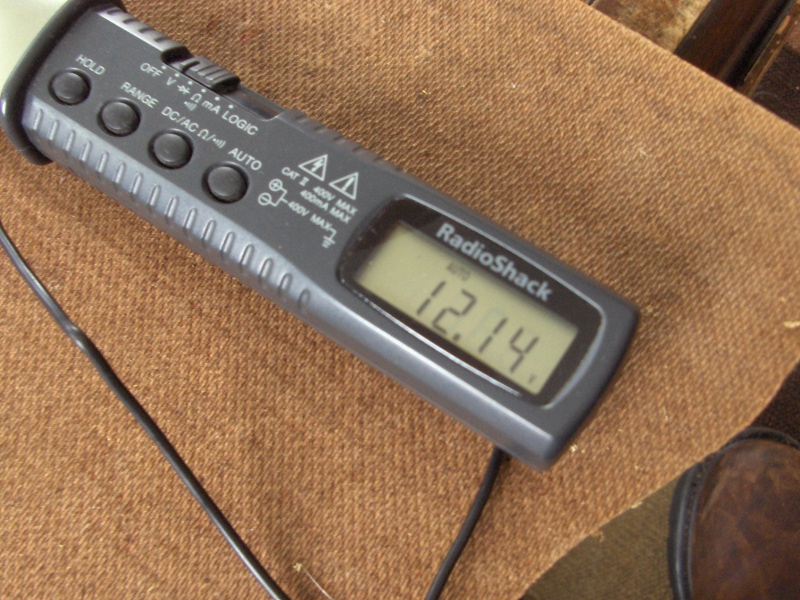...Two months later!

With the phev install kind of at a standstill for the moment, I took some time to get back to this project.
I've decided to abandon the sunroof idea for now. Its just not going to happen, so I am changing things a bit. I have decided to use the rear window instead. The plus side of it is I have twice the area, so I could get a 60W panel in there. The bad side is I need to park facing north now (not a problem at work). It will still get sun facing the other way, just not as much. I also have to design a retracting system of some sort so I can see while driving, and also it won't collect power while driving. I'd rather have the sunroof, but I just haven't found a good way to get that dot matrix stuff off.
Anyway, I put the panel together today. I was pretty simple, just time consuming. Also, for anyone wanting to do this you need to be VERY careful with the solar cells. Thankfully the ebay seller sent a few extra, but I still broke a few and had to use them.
I found a piece of hardboard in the garage almost the perfect size. My only concern with it is how it'll hold up to the heat. If anyone has any experience with it, please let me know.
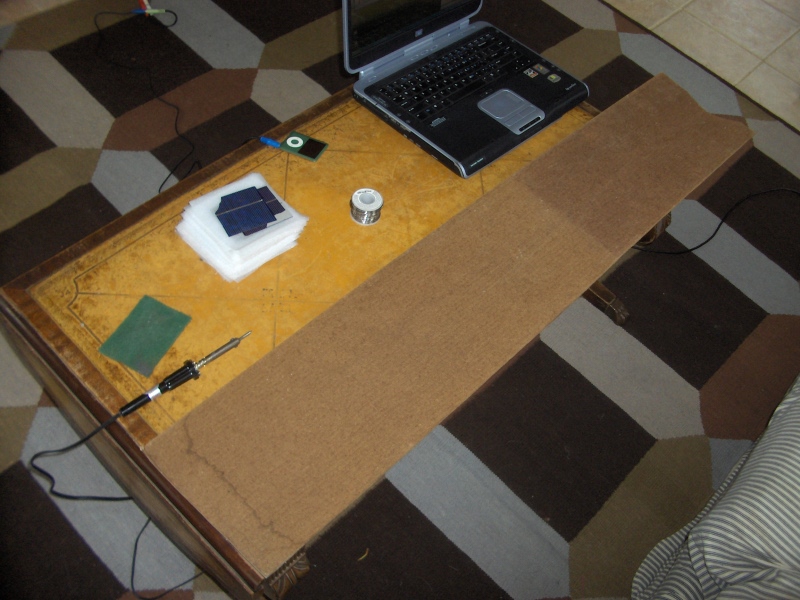
This is incredibly easy to do... I actually snapped one completely in half when I went to pick it up on accident.

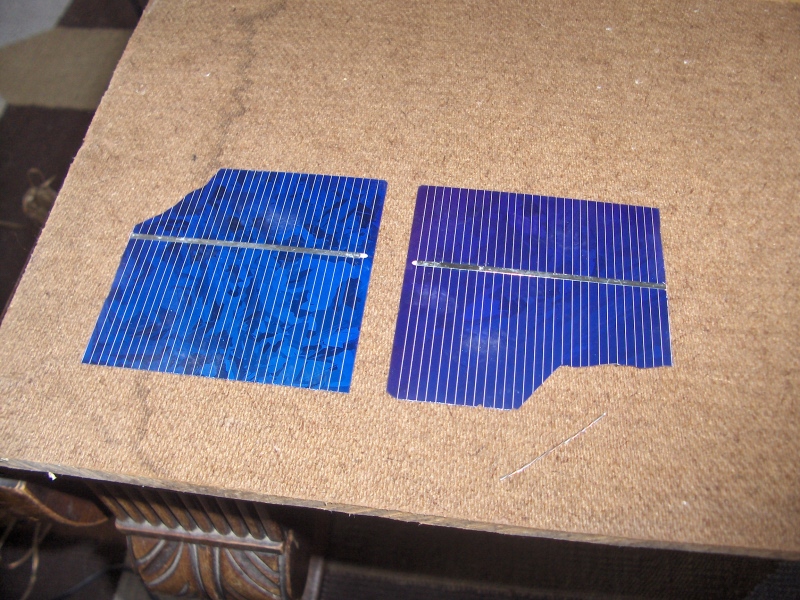
I didn't have any ribon that they sell on ebay for connecting the cells. So, I just dug around and found some 20 gauge speaker wire. This worked out just fine.
To build the panel, you need to solder the front of one cell to the back of the other. This connects the cells in series to increase the total voltage from the panel. Each cell only generates .5V, so you need quite a few. In the case of a 12V battery charger, you need 36 in series to get 18V. The point being as the load increases on the panel, the voltage across the cells drops some and you need to keep the voltage above the battery voltage to continue charging. Also, on cloudy days there isn't as much voltage created by a cell, so having a higher panel voltage creates a form of buffer to ensure there is still some charging going on in cloudy weather.
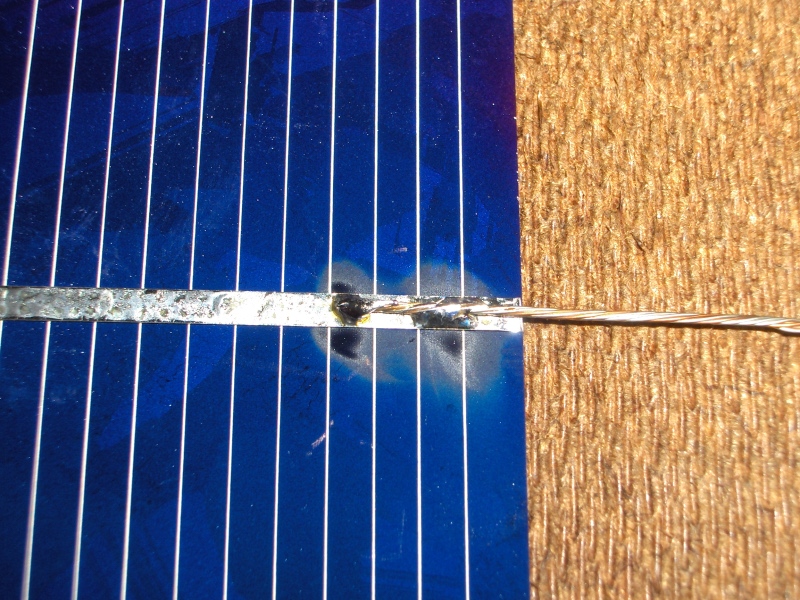
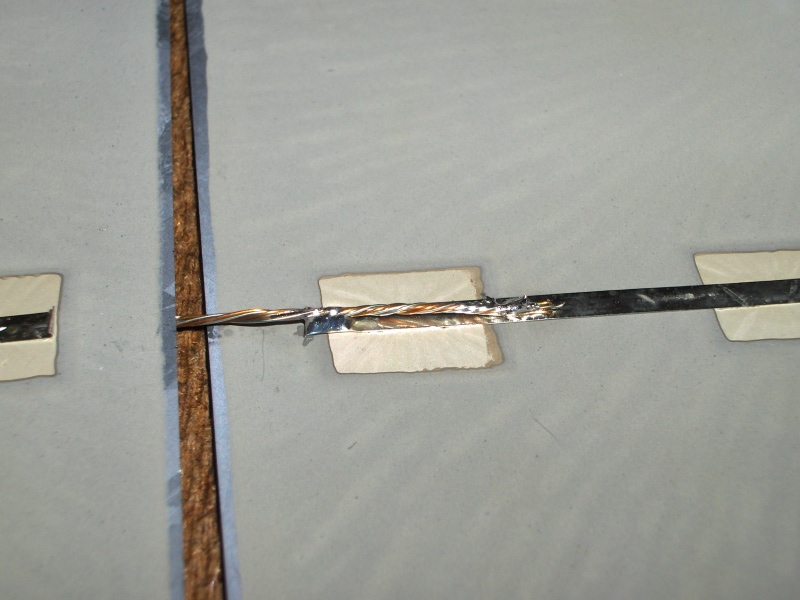
Here is the panel all connected together. I still need to attach them somehow to the hardboard. I'll probably just use what others have, a blob of silicon or something similar.
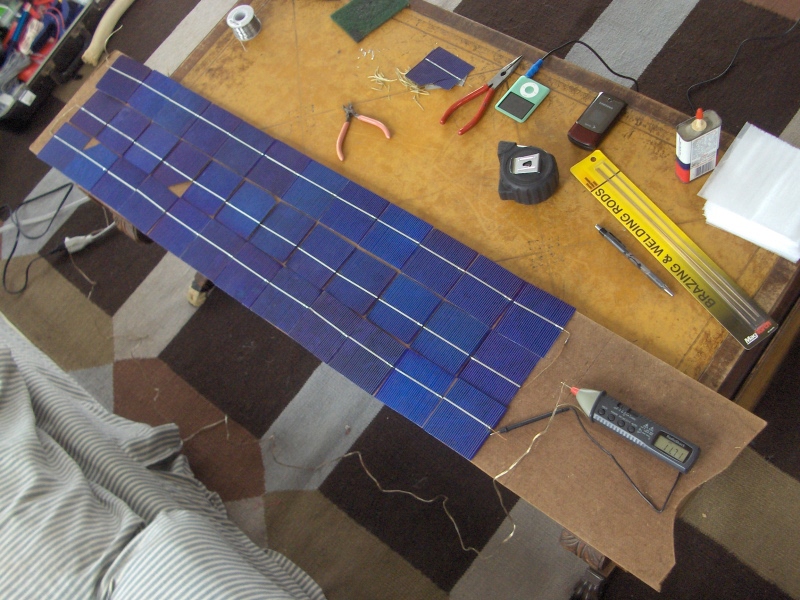
This is what voltage I got on an overcast day, in the house (a sunroom admittedly) off the panel. Not too shabby I don't think. I checked it a bit later and it was producing 13.5V with a bit more sun.
